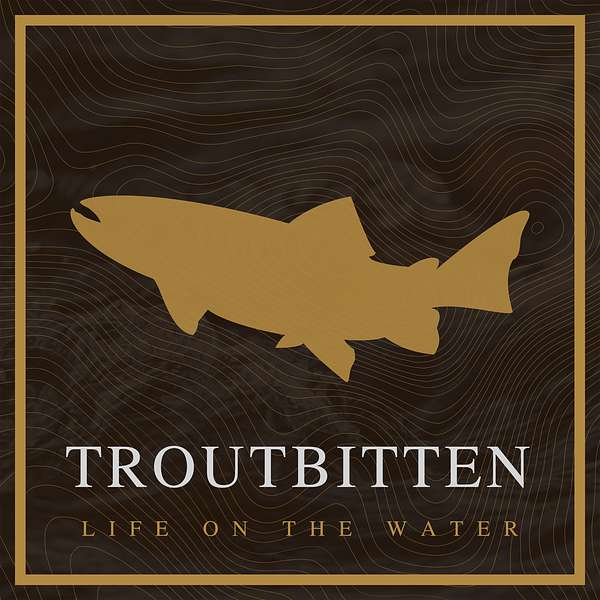
Troutbitten
Life on the water. Troutbitten is a deep dive into fly fishing for wild trout in wild places. Author and guide, Domenick Swentosky, shares stories, tips, tactics and conversations with friends about fly fishing through the woods and water. Explore more. Fish hard. And discover fly fishing at Troutbitten.com — an extensive resource with 1500+ articles about trout, friends, family and the river.
Troutbitten
How to Handle a Trout | Safe Catch and Release -- From Hooking a Trout to Letting It Go
Fish cold water, fight 'em fast, handle gently, release quickly. In this second edition of the Troutbitten podcast, my friends Bill, Austin, Trevor and Josh join me to discuss safe catch and release practices, from hooking a trout to letting it go. Because if the goal of catch and release is to put a trout back and catch it again, then we want to ensure that the health of the fish remains intact.
Some of the catch and release best practices might seem like common sense. But the truth is, handling a trout without harming it isn’t necessarily intuitive. It takes some forethought and preparation. You need the right tools — the right skills. And it takes a good understanding of how trout are built — how they are a little more sensitive than other species. It helps to understand the trout and learn its habits, if you plan to release the fish without harming it.
There’s a lot of nuance in topics like this. And we cover the details around these key principles: Fish cold water, fight 'em fast, handle gently, release quickly.
At every level of experience, we’re always learning and trying to improve or share ideas about the fish we chase. The Troutbitten guys joining me are full of ideas, and they share some great thoughts about how to handle a trout.
Lastly, we discuss how experience is the only teacher. We acknowledge that mistakes inevitably happen. We've all killed trout accidentally, and it's part of the learning process. But education is the best preparation for releasing a trout safely. And hopefully, it's podcasts and shared information, like this, that gives fly anglers the confidence to go fishing and enjoy their time on the water.
Here are a few key supporting articles from Troutbitten:
READ: Troutbitten | How to Hold a Trout
READ: Troutbitten | Their Heart in Your Hands
READ: Troutbitten | Are We Taking the Safety of Trout Too Far?
READ: Troutbitten | If You Have to Revive a Trout, It's Probably Too Late
READ: Troutbitten | Category | Fighting Fish
Visit:
Troutbitten Website
Troutbitten Instagram
Troutbitten YouTube
Troutbitten Facebook
Thanks to TroutRoutes:
Use the code TROUTBITTEN for 20% off your membership at
https://maps.troutroutes.com
Thanks to Skwala
Use the code, TROUTBITTEN10 for 10% off your order at
https://skwalafishing.com/
So, this is the Troutbitten podcast. Welcome back. And thanks for tuning in.
I’m Domenick Swentosky, owner of Troutbitten and author of Troutbitten.com. Today, we’re going to cover a topic that I’ve been writing about lately.
We’ll talk about safe catch and release practices, um . . . from hooking a trout to letting it go. Because if the goal of catch and release is to put ‘em back and to catch those trout again, then we want to ensure that the health of the fish remains intact.
I suppose that some of the catch and release best practices are common sense. But the truth is, handling a trout without harming it isn’t necessarily intuitive. It takes some forethought and preparation, really. You need the right tools — the right skills. And it takes a good understanding of how trout are built — how they are a little more . . . sensitive . . . than other species. I mean, every animal is different.
For example, we just got back from a family beach trip where, Joey, my oldest son, wanted to fish for shark. I don’t know how to handle a shark. So I did some research beforehand. I also tried to prepare myself for accidentally catching a stingray — another species I have no experience with. Heck, I remember the first bluefish we caught from the surf a few years ago — I cut my finger on those sharp teeth, because I had no knowledge about bluefish. Their teeth are a lot more sharp than a trout’s.
So it helps to understand the species and learn their habits, if you plan to release the fish without harming it.
There’s a lot of nuance in topics like this. And we’re gonna dig pretty deep into the details today.
At every level of experience, we’re always learning and trying to improve or share ideas about the fish we chase. The Troutbitten guys joining me today are full of ideas and ready to share some thoughts about how to handle a trout. So let’s introduce them . . .
Introduction of guests and conversation . . .